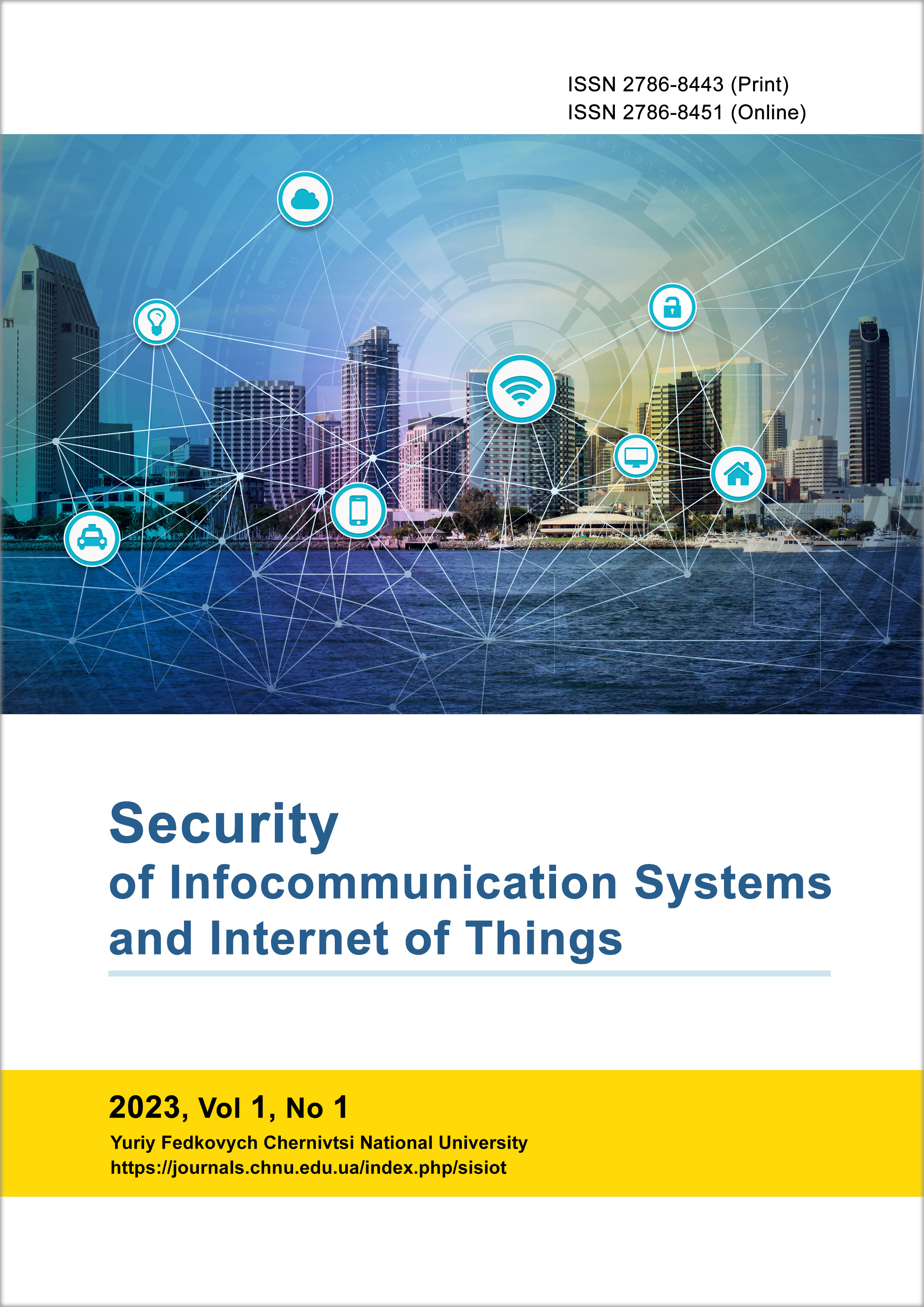Analysis of Self-Similar Binary Sequences
DOI:
https://doi.org/10.31861/sisiot2023.1.01003Keywords:
self-similarity, momentum, coding, correlationAbstract
Rectangular pulses are simple to form, including with the help of a modern radio element base. In the work, a calculation analysis of the base and correlation coefficient of a binary sequence with a length of eight rectangular pulses was carried out. The obtained calculations of the base of sequences were analyzed, and a conclusion was made about which of them is the most suitable for encoding information during data transmission over the radio channel. Based on the calculations of the correlation coefficient between the series of pulse sequences, it was concluded which of them could be separated in the channel. Based on the structure of the self-similar sequence of pulses, a mathematical model and an expression of the spectral density of the proposed signal are written. A new method of correlation analysis for sequences that are symmetrical was also proposed, which allowed for improved recognition of the useful signal at lower signal-to-noise ratios in the communication channel. The method is a combination of autocorrelation and cross-correlation functions. The right and left halves of the symmetrical sequence and the reference signal are compared. The ratio of the height of the main petal to the side petals in our proposed correlation function is greater than in the classical version. To obtain the greatest possible ratio of the height of the petals, it is advisable to choose symmetrical sequences that have the largest base. With the help of such sequences, it is planned to encode one bit of information, which should improve the recognition of transmitted information against the background of noise. The obtained results are planned to be used for the development of a transmitter and receiver with an improved coding method for recognizing a useful signal against a background of noise.
Downloads
References
B.B. Mandelbrot. The Fractal Geometry of Nature. Hardcover: Times Books, 1982, 468p.
J. Feder Fraktals. Springer, 1988, 310p.
V.N. Bolotov, S.E. Kolesnikov, Yu.V. Tkach, Ya.Yu Tkach, P.V. Khupchenko. "Fractal Communication System", Electromagnetic Phenomena, vol.7, №1 (18), 2007.
O.B. Novikova "Fractal spline model of a broadband signal", Bulletin of the National University "Lviv Polytechnic". Radio electronics and telecommunications, no.738, pp.28–33, 2012.
Yu. Bobalo, A. Veryha, M. Klymash, B. Mandziy, R. Politanskyi "Design and Hardware Implementation of Fractal Comb-Structured Signals", Smart Computing Review, vol.4, no.6, pp.459–469, Dec. 2014.
A.D. Veryha, R.L. Politanskyi, M.S. Rusnak, N.Yu. Semenyuk "Self similar sequences of impulses and methods of their detection", VII International scientific and practical conference "Physical and technological problems of information transmission, processing and storage in information communication systems", Chernivtsi, November 8-10, 2018, pp.95–96.
S.A. Ostanyn "Fractal noise generator of arbitrary size", Journal of radio electronics, no.8, 2012.
V.N. Bolotov, Yu.V. Tkach "Extraction of fractal signals in a complex electromagnetic environment", Electromagnetic phenomena, vol.3, No. 2 (10), pp.211–227, 2003.
S.V. Saveliev "A countable set of binary sequences for broadband communication systems based on a system with dynamic chaos", 111 All-Russian Conference "Radiolocation and Radio Communication" - IRE RAS, October 26-29, 2009, pp.488–493.
Yu.Ya. Bobalo, R.I. Zhelyak, M.D. Kiselichnyk, Z.O. Kolodiy, B.A. Mandziy, V.M. Yakubenko; under the editorship Dr. Tech. Sciences, Prof. Yu.Ya. Bobalo and Dr. Tech. Sciences, Prof. B.A. Mandziy Mathematical models and methods of analysis of electronic circuits: teaching. Guide. Lviv: Publishing House of Lviv Polytechnic, 2013, 320p.










